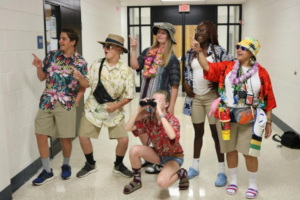The Semiotics of Tourism
Progymnasmata: Confirmation
Culler does a fantastic job of outlining how symbols mean more than their function. In other words how objects have “signifiers” being cues to what that object symbolizes or the judgments unconscious or conscious one gives a person, place or object. One example he uses are “blue jeans”. When a person puts on blue jeans they may not be thinking of the symbol it gives off or the signifiers it has but it certainly does give off a meaning. Blue jeans indicate a sense of casualness or western style. They could also have a different meaning depending on the culture and situation they are in. Blue jeans pose a different symbol when they are worn at a rodeo compared to a fancy dinner or when they are worn in LA compared to Kuwait City. While this is already an interesting observation it touches on a larger concept being that everything humans produce is an imaginary concept. Even though those imaginary concepts have power and can make differences in society, they are still made up or are being described by our limited language. (If you are confused by everything being an imaginary concept Yuval does an incredible job of describing this concept in his book Sapiens) There is no way to escape this concept along with the semiotics Culler explains. One is always going to perceive different objects as cultural signs, even if the judgment they give does not match the intended expression. More importantly these objects, their intended symbol, or their misinterpreted symbol even if it is a tiny aspect of an environment gives authenticity to that environment. Signifiers even though they are imaginary and described by specific cultures make up certain cultures and environments. This observation is important because it allows reflection on how one or a place represents itself or at least tries to represent itself. Which is especially important in the tourism industry.
 Culler does a good job and splits these two types of people, travelers and tourists.
Culler does a good job and splits these two types of people, travelers and tourists.